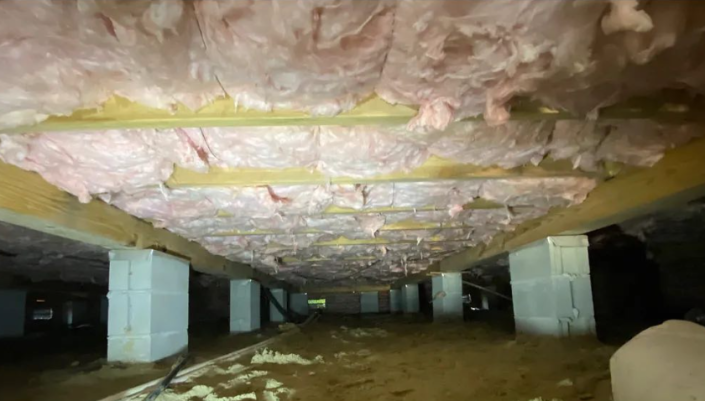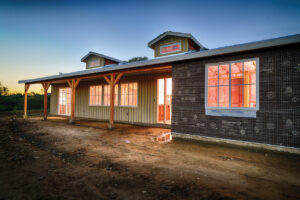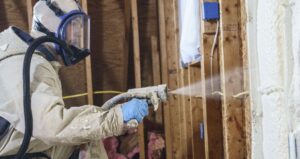If you’re finding that your first floor feels colder than the rest of your home, even when the thermostat says everything should be fine, you’re not alone. Many homeowners are puzzled by this common issue, especially when it gets colder outside. The root of the problem might be under your feet—it’s your crawl space. If your crawl space isn’t insulated correctly, the floors above can stay uncomfortably cold, forcing you to wear slippers or socks to keep warm constantly.
Imagine walking around your house; every step on the first floor feels like ice. This could happen because the air in your crawl space is leaking into your home, bringing the cold along with it. Proper crawl space insulation acts like a thermal blanket, keeping the cold and warm air out, which is crucial for a comfy living environment.
When the insulation in the crawl space is lacking, you might feel like your feet are constantly freezing, no matter how high you set the heat. This is because cold air seeps through the floor, making it feel like you’re living in a drafty house, even if the air temperature is just right. Think of it as an uninvited guest that won’t leave!
So, what can you do about it? First, you need to understand what’s going on down there. Crawl spaces can vary significantly from home to home, but one thing is sure: your comfort will take a hit if yours needs to be adequately insulated. Taking steps to insulate your crawl space makes your floors warmer and can lower energy bills. No more cranking up the heat and seeing your utility bill skyrocket.
Addressing the chilly floor issue is a step towards a more comfortable and energy-efficient home. Once you tackle the crawl space, you can walk barefoot without regretting it, feeling the relief of a warm and cozy home.
Understanding Crawl Space Insulation
To understand why your first floor is always cold, it’s essential to know what a crawl space is and how it differs from a slab foundation. A crawl space is a hollow area between the ground and the first floor of your home. Think of it as a shallow basement that offers easy access to plumbing, electrical systems, and other utilities. Unlike a slab foundation, a solid concrete base poured directly on the ground, a crawl space can influence your home’s temperature quite a bit.
One key aspect of a crawl space is that it can act as a gateway for outside air to enter your home. If it’s not insulated properly, cold air can seep in and make the floors above it feel icy, no matter how warm the air in your house might be. This happens because the cold air from the crawl space travels up through the floor, chilling everything it touches.
Crawl spaces can be either ventilated or unventilated. Ventilated crawl spaces have vents to allow outside air to circulate, which can prevent moisture buildup and let in cold air during the winter. Unventilated crawl spaces are sealed and insulated to keep out cold air and moisture. However, if the insulation is lacking or damaged, even unventilated crawl spaces can become a source of cold floors.
Now, why does this matter so much? That chilly air under your feet makes your home less comfortable and can lead to higher energy bills as your heating system works overtime to maintain a comfortable temperature. It’s like having a small window always open under your house.
Understanding the concept of crawl spaces helps identify the steps needed to fix the issue. Proper insulation can turn that chilly gateway into a protective barrier, making your floors—and your home—much warmer and more energy-efficient.
The Significance of Crawl Space Insulation
Insulating your crawl space is a game changer for keeping your home warm and cozy. Think of insulation as a blanket for your house, preventing that cold air from sneaking in and making your floors icy. Proper insulation ensures that the temperature inside your home stays more consistent, so you won’t have to keep cranking up the heat to stay comfortable.
One of the big giveaways that your crawl space might need insulation is if your floors are icy or your heating bills are through the roof. The type of insulation you choose and its R-value—the measure of its resistance to heat flow—are key factors. It measures how healthy materials resist heat flow, which is essential for keeping your home comfortable. Picking the proper R-value isn’t a one-size-fits-all situation; it depends on your local climate and home’s heating and cooling needs. Selecting the optimal R-value is essential to ensure your property is well-insulated.
When the crawl space is adequately insulated, it acts as a barrier, stopping that cold air from creeping into your living spaces. This makes your home more comfortable and can lead to noticeable savings on your energy bills.
Imagine not having to double up on socks or wear slippers all the time—just walking around your house and feeling comfortable. That’s the kind of impact proper insulation can have. Plus, a well-insulated crawl space can help maintain the overall health of your home by reducing the risk of moisture buildup and mold, which can lead to other costly repairs. This long-term security is the confidence that comes with a wise investment in your home.
So, if you’re tired of freezing floors and high heating costs, it might be time to upgrade the insulation in your crawl space. It’s a step toward a cozier, more energy-efficient home.
Expert Solutions
If you suspect your crawl space is the reason for your cold floors, it’s time to consider professional solutions. Companies like Zhe Industries specialize in crawl space insulation and offer services that transform your chilly first floor into a warm haven. Working with certified energy experts is crucial because sealing air leaks and adding proper insulation can yield significant savings of up to 10% on your annual energy bills. Choosing professionals ensures that your insulation needs are met efficiently and effectively.
Having experts handle your crawl space insulation means they’ll assess the specific conditions of your home and recommend the best type of insulation for your situation. Whether your crawl space needs to be encapsulated or air leaks need sealing, they have the knowledge and tools to get the job done right, reassuring you of a job well done.
Pay attention to the benefits of certified professionals caring for your insulation needs. Their expertise can help identify other issues contributing to your cold floors, such as moisture buildup or poor ventilation. Addressing these problems will improve your home’s comfort, overall health, and energy efficiency.
In short, bringing in experts like Zhe Industries for crawl space insulation can make a difference in solving your cold floor dilemma. We provide tailored solutions beyond just adding insulation, ensuring your home stays warm and your energy bills stay low. So, if you’re tired of walking around in slippers or cranking up the heat, consider giving the pros a call to transform your living space.
Wrap-Up and Future Actions
We’ve discussed why your first floor might be cold and how crawl space insulation is crucial in addressing this issue. Now, it’s time to consider the following steps to ensure your home stays warm and comfortable.
First, inspect your crawl space for any signs of poor insulation, like drafts or gaps. While a DIY approach might seem tempting, this is one area where professional expertise can make a significant difference. Professionals can evaluate thoroughly and pinpoint issues that might not be apparent to the untrained eye.
If you’re serious about fixing those cold floors, consider contacting experts like Zhe Industries. They have the know-how to assess your crawl space and recommend the best insulation solutions for your home. Their certified energy experts can ensure that your insulation is installed correctly, sealing off any air leaks and providing an effective barrier against the cold.
But it’s not just about insulation; a comprehensive approach might include encapsulating your crawl space or improving ventilation. These additional steps can help maintain your home’s overall health, preventing moisture buildup and mold, common issues in poorly insulated crawl spaces.
Taking action now can also have long-term benefits. Improved insulation can lower energy bills, as your heating system won’t have to work as hard to maintain a comfortable temperature. Plus, your home will be a more enjoyable place to live, free from the constant need to bundle up indoors.
So, if you’re tired of cold floors and high heating costs, prioritize crawl space insulation. Contact professionals who can provide a tailored solution for your home’s unique needs. This investment will pay off in comfort, energy savings, and overall home health. Don’t wait—take the first step toward a cozier, more efficient home today.







